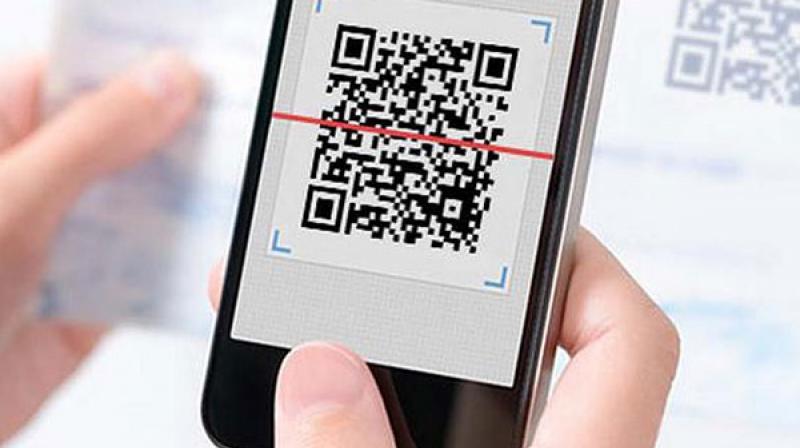Ever since digital payment has been discovered our life has become relatively easy, as now we do not have to rush to ATMs in order to get the cash, nor we have to make the payment through cash. As someone has rightly said, every new thing has its shares of cons and pros, and the same goes with digital payment. One of the frauds that become common these days is QR code fraud. Scroll below to know more about other common online scams and different ways to save yourself from these frauds.
List of Common Online Frauds
1. Request Money Fraud
UPI has a unique feature that allows the user to send the payment request. With the just click on the same, your money would be paid. Though it is bliss at times, however, it could also work on the contrary. As anyone could send you the payment request and without knowing the sender, we often end up paying money. The fraudsters misuse the same feature and use it in their favor. Many people have fallen prey to this and have responded to messages with a PIN.
2. Scanning QR Code for Receiving Money
With mobile apps like Paytm, GooglePay, and others, paying through QR code has become common. People often find it simple to scan the QR code and make the payment. However, it could, at times, lead to fraud. In fact, there have been many cases so far related to QR codes. One has to be cautious, especially if someone sends you a QR code on WhatsApp and ask you to make the payment. It could definitely mislead you at times.
3. Frauds Through Social Media
Undoubtedly, we live in a digital age where everyone has access to social media. However, like everything has its pros and cons, this too has its shares of benefits and disadvantages. At times, fraudsters make a call through social media and ask the person to download the screen sharing apps and hold their bank cards to scan all the valuable data from the card. Once they have card details, they can anytime transfer the funds from your account into their account.
That’s not it. Fraudsters also keep an account of the reviews that users have shared on the respective customer care portal and the same aftermath. They call the user and ask them to share their bank cards’ details, seeking them to resolve their grievances shortly. And, users end up sharing sensitive information like OTP, card details, etc.
4. Bank Card Fraud
This is one of the common frauds. Fraudsters make a call claiming that they are representative of a bank or a lottery site and ask you to provide them sensitive information, including a 16 digit card number and CVV number that is printed on the back of the back card. They also ask for the OTP for the verification, and as soon you will share the OTP, your money would be transferred immediately, and you would be left with no solution.
5. Social Engineering Fraud
Social engineering fraud is a type of fraud when your personal information like date of birth, location, and others so that you can trust them and as they could make misuse of the same. Subsequently, they claim to be the customer support representative and promise to resolve your queries at the earliest. Subsequently, they also ask you to share other important information and banking details.
6. SIM SWAP Fraud
This is yet another serious fraud that could take place while making the digital payment. At times fraudsters avail of new SIM and submit your personal documents to the mobile operator. On the other hand, they call the subscribers and pretend to be the representative of a mobile operator and ask you to share the message you have received to upgrade your network. The SMS that users receive has a 20 digit number. Once you share this information with them, your SIM would no longer be functional, and they would receive all the OTPs.
Different Ways to Share Digital Payment and QR Fraud
1. First things first, do not ever share your sensitive information such as PIN, card number, expiry date, etc., with an unknown person. If someone claims to be a representative of the bank or any other place, ask them to share an official email for the same and do not share your email id with the person. Also, make sure that you revert them through the official platform.
2. Another thing that one should remember is as soon you receive a payment request, you do not have to pay it or share your PIN number. If you do not know the person who has sent the request you can make complaint against hi,
3. Do not install any type of third party app that includes Teamviewer, Anydesk, etc.
4. If you have any grievances related to the particular company, visit their official website in order to get their customer care number. Do not visit the site through social media.
5. This is one of the important suggestions, do not picks calls or revert to unverified mobile numbers that claim to be from your bank.
6. Make sure you download mobile apps from the Google Play Store and App Store in your Android and iPhones, respectively.
7. Also, do not download the UPI app from a third party.
8. Last but not least, make sure there is no bug and virus in your laptop. To prevent this, you can purchase Quickheal software, and do not forget to browse through Quick Heal offers to maximize your purchase.
Conclusion:
As technology is evolving, we have become more dependent on gadgets and devices. While it is always good to be updated with the latest development, one should be equally sound when it comes to digital payment. One should all the possible measures to prevent themselves from any type of fraud.
